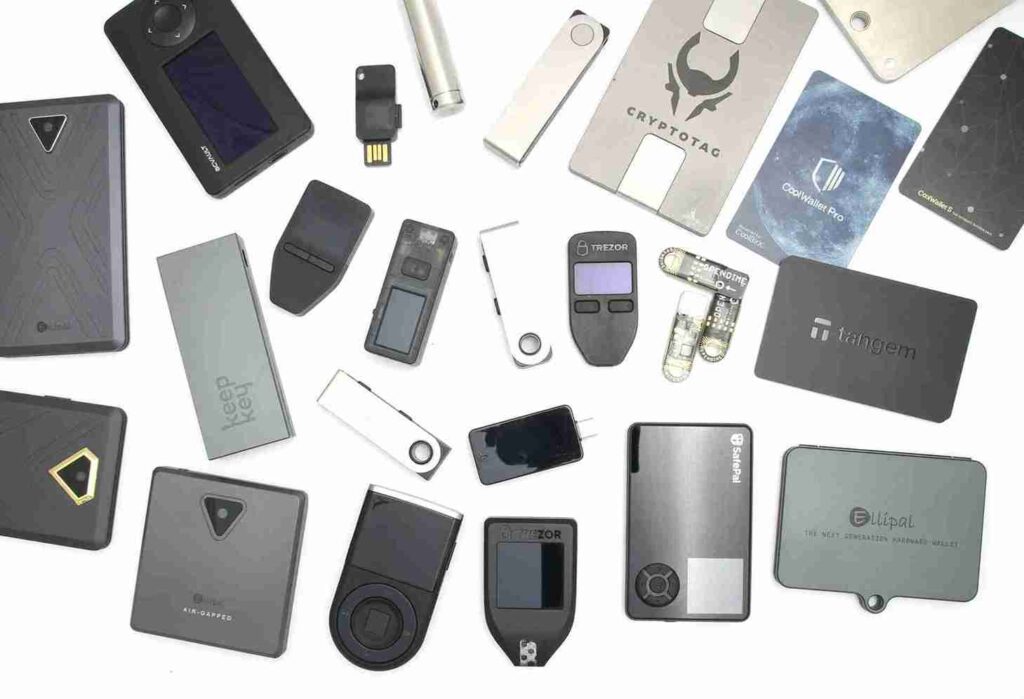Cryptocurrency hacks and security concerns are omnipresent. Therefore users must pay attention to how to store their assets safely. Luckily, the advent of hardware wallets provides users with a viable option for safe self-custody of these assets.
Hardware wallets serve as an optimal method of safeguarding digital assets. Despite the robust security measures, there are basic risk management practices to follow to keep hardware wallets away from malicious actors trying to steal funds from the physical device.
A common expression in the crypto community is to “buy the dip” and “HODL” (Hold Onto Dear Life). The best investment strategy may not necessarily be HODLing. However, it is worth investigating given the many attack vectors in the cryptosphere. This includes scams, extortion, crypto exchanges going out of business or becoming the target of serious hacks, fake Vitalik’s and CZ’s of crypto Twitter looking to profit out of unwary victims. All of these elements make the average crypto Joe unsure of the best place to store their crypto assets safely over the long term. This is where cryptocurrency hardware wallets come into the picture.
What Makes Hardware Wallets a Safe Bet for Crypto Users?
A centralized cryptocurrency exchange like Binance or Coinbase may be the first point of entry for many users entering the industry. Although these platforms offer their users a high level of convenience, convenience also carries significant risks. Keeping coins on a centralized exchange effectively gives up self-ownership by giving the centralized exchange authority over the assets.
Holding assets on the exchange leaves the users’ cryptocurrency on a “hot” or online wallet, which has seen its fair share of setbacks over the years: the infamous Tokyo-based Mt. Gox hack in 2014, in which hackers had stolen approximately 740,000 BTC, and the Binance breach more recently, which resulted in the loss of 2 million BNB tokens.
Given the potential for tremendous losses in a novice burgeoning space, awareness on the best practices to safeguard assets is critical. This sentiment is echoed by crypto natives since time immemorial and users should take notice.
The critical data that needs to be secured are private keys.
You can think of the private key as a password that unlocks the virtual vault that holds your money.
Coinbase
The private key, which authorizes access to the cryptocurrency on the blockchain, is typically a string of letters and numbers. The possibility of a breach reduces as long as this key is away from a network. In contrast, there is a much greater chance for malicious actors to obtain private keys created on a device that is online or stored on the cloud.

Offline Security
Hardware wallets keep a crypto user’s private keys offline or in “cold” storage. Hardware wallets do not connect to the internet, making it virtually impossible for hackers to access their contents since it lives on the device. Any time a user sends or receives cryptocurrency to and from a wallet, the transaction must be “signed” using their private key. Through the use of a crypto bridge, a straightforward piece of software that enables a hardware wallet to connect to the blockchain, transactions with a hardware wallet are signed on the device once connected to a PC.
Complete Self—Reliance.
What’s liberating about blockchain is that you can become your own bank.
ConsenSys
Owning a hardware wallet gives users complete control over their private keys. Storing assets here encapsulates Satoshi’s vision of self-ownership and goes along with the libertarian ethos of self-reliance, away from the risk of the dubious middleman overseeing one’s funds while allowing people to take full control of their own finances.
A Backup Mechanism
In case the hardware device is stolen or misplaced, the funds are still retrievable because the assets do not reside on the device, but rather hold the private keys for the blockchain addresses, while the crypto itself is always on the blockchain. When setting up, hardware wallets require a pin to be protected. Anyone attempting to enter the wallet has three tries before the device “bricks,” erasing all stored data from the device.
A clever concept done during the set-up process, known as the recovery or seed phrase, safeguards a user’s crypto autonomy. The seed phrase consists of 12 to 24 randomly generated words, allowing users to retrieve their funds by inputting these words when setting up a new device. It, therefore, becomes paramount to carefully safeguard the seed phrase.
The Best Practices When Buying and Using Hardware Wallets
Purchasing the Device From the Manufacturer’s Official Website
When purchasing a hardware wallet, it is imperative to only use official channels to buy the product. There are reports of pre-initialized hardware wallets sold to unsuspecting users. Users looking to buy their first hardware wallet can use this guide to find the top cryptocurrency cold wallets.
Examine for Any Signs of Tampering
Check the official website to ensure that the contents of the package match the product received. Most hardware wallets are sealed with a clear holographic sticker to inform the user of any tampering.
Thoroughly Crosscheck When Transferring Large Sums Of Crypto
Despite hardware wallets being the most secure method of storing crypto, it is vital that users continue to practice standard crypto security tips. For instance, when sending crypto, attention to detail is key. It is critical to cross-verify if the recipient’s address matches both the hardware device and the connected PC before initiating the transaction.
Conclusion
While most hardware wallets provide a method of retrieving funds through the aforementioned backup mechanism, it is nevertheless crucial to maintain a cautionary outlook when storing the physical wallet, hidden away from peering individuals that might try to access the device. This requires an awareness of basic security precautions, such as protecting the backup seed phrase, concealing the device itself, and avoiding discussing or displaying the device altogether.
Using hardware wallets to protect one’s cryptocurrency assets is a great place to start, however, it pays to be extra vigilant when protecting these assets.



















